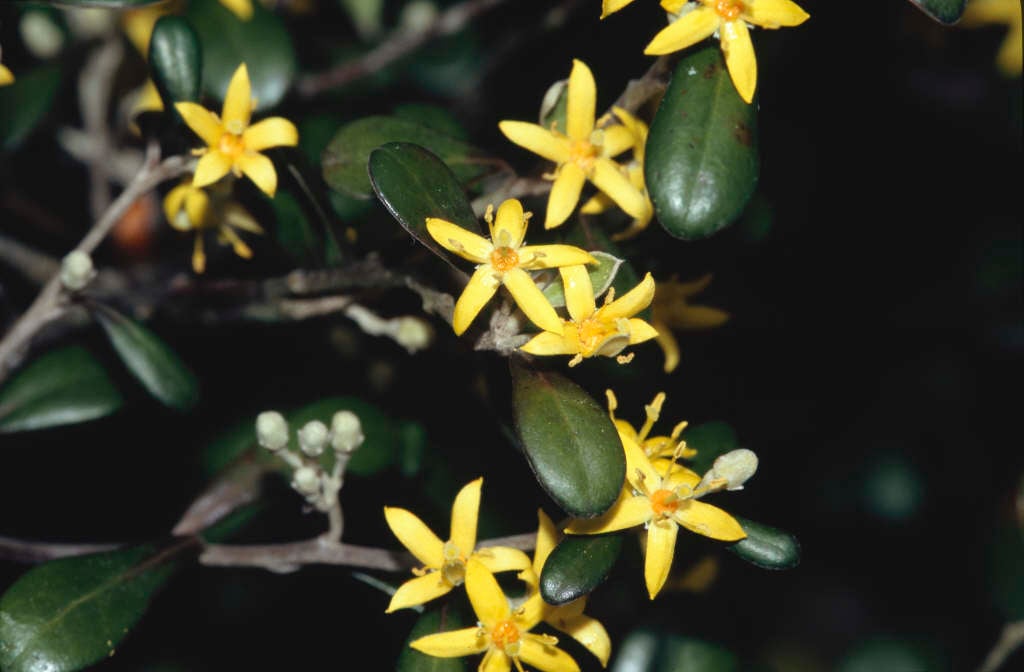Not the plant you're looking for? Search over 300,000 plants
Shrubs
Size
Ultimate height
1.5–2.5 metresTime to ultimate height
10–20 yearsUltimate spread
1.5–2.5 metresGrowing conditions
Chalk
Loam
Sand
Moisture
Well–drainedpH
Acid, Alkaline, NeutralColour & scent
| Stem | Flower | Foliage | Fruit | |
| Spring | Yellow | Green | ||
|---|---|---|---|---|
| Summer | Green | |||
| Autumn | Green | Red Yellow | ||
| Winter | Green |
Position
- Full sun
Aspect
South–facing or West–facing
Exposure
Sheltered Hardiness
H4Botanical details
- Family
- Argophyllaceae
- Native to GB / Ireland
- No
- Foliage
- Evergreen
- Habit
- Bushy
- Potentially harmful
- Fruit are ornamental - not to be eaten. Wear gloves and other protective equipment when handling. Pets: Fruit are ornamental - not to be eaten - see the HTA guide to potentially harmful plants for further information and useful contact numbers
- Genus
Corokia are evergreen shrubs with leathery leaves and small, bright yellow, star-shaped flowers followed by red,yellow or orange berries
- Name status
Correct
- Plant range
- New Zealand
How to grow
Cultivation
Grow in fertile well-drained soil in full sun with shelter from cold drying winds
Propagation
Root greenwood cuttings in early summer, or semi-ripe cuttings in mid or late summer
Suggested planting locations and garden types
- City and courtyard gardens
- Architectural
- Coastal
- Cottage and informal garden
- Flower borders and beds
- Wall side borders
Pruning
Pruning group 8: will tolerate hard pruning to restrict growth, if required
Pests
Generally pest-free
Diseases
May be susceptible to honey fungus in gardens where it is present but insufficient data to determine degree of susceptibility
Get involved
The Royal Horticultural Society is the UK’s leading gardening charity. We aim to enrich everyone’s life through plants, and make the UK a greener and more beautiful place.
